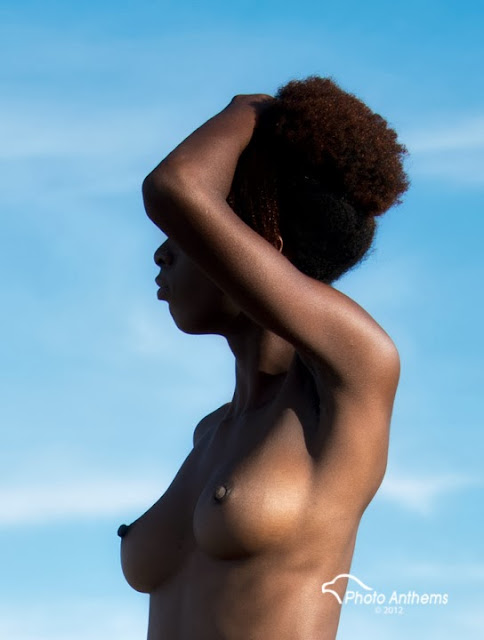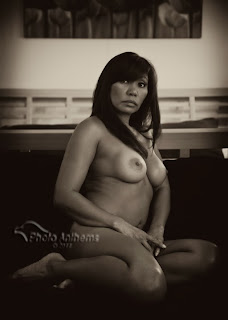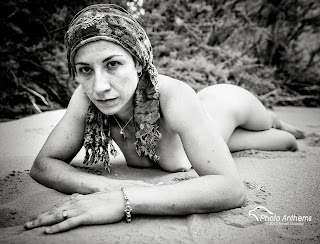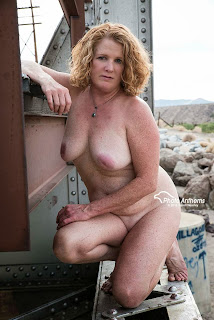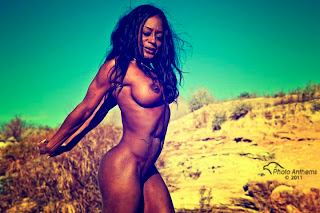 |
| Art Model, Kristi C. ©2013 Terrell Neasley |
"A camera is a tool for learning how to see without a camera."
~ Dorothea Lange
There are die-hard Chevy and Ford owners here in America. I'm sure you've been driving down the road at some point and see a Chevy truck with a sticker of a "Calvin"-looking figure urinating on a Ford logo (Right, Taylor!)...or vis versa. Ninety-Five percent of photographers are the same exact way. BUT MUCH WORSE! And to an extent, I understand there's a bona fide reason for it. Unlike auto owners, there's a significant investment in their gear that makes it difficult to switch brands. Yes, a car is a significant purchase. However, if you got tired of your Hyundai and wanted to switch to a Toyota, its a matter of choice for the next time you are ready to buy a car. Photographers have an additional consideration when the thought crosses their mind to switch camera manufacturers... Compatibility.
So what's my point in all this? Well, its simple. The camera is a TOOL! Lenses and other camera accessories are tools as well. Unless you own stock in your camera brand, or they are paying you to use their gear, or you are dating/married to the daughter/son of a brand executive, why limit yourself? The right tool for the right job. Most guys have heard that said before who have grown up with their dads working the family car or adding the fixing a hole in the roof. And that's the same belief I carry with my gear. Yes, I own and work primarily with a Nikon camera and system. Last year, I was a 10-year Canon veteran. But as I mentioned in my last post about Sony, the A7R might be better suited for my travel work. And if I have a job tomorrow that requires low-light work, I might rent a Canon 5D Mark III because of its superior abilities in shooting at night. THAT's an option. Yes, the Nikon D4 is likely the best possible option out there for that, but its also a larger system and maybe I don't wanna be concerned with the extra weight. Regardless, its an option. I like options.
 |
| Anonymous model, ©2013 Terrell Neasley |
Buying a camera is not the most significant purchase you will make. Its where it all begins, sure. But lenses are where the magic happens. On average, I would bet that a photog will spend about 3 times as much in lenses as they do a camera, especially if you are full-frame. On the flip side, you will spend more upgrading cameras then you probably will spend upgrading lenses. While I was Canon, my 5D MkII and my 7D bodies were maybe $3500 combined and that represented about a quarter of the value of my lenses. And this is where the hard part comes in. I made the decision to switch brands because my needs changed and the Nikon D800E served my purposes better than the upgrade to the MkII, the new 5D MkIII. Canon makes excellent products, so don't get me wrong. I was Canon for about 10 years. Love 'em. But what did that mean for me? I had to dump my significant investment in Canon lenses because they were not compatible with the Nikon body. I couldn't take my Canon lenses and use them on my new Nikon D800E. Not only that, my peripheral gear didn't work either. I had 5 Canon flashes. I had a Canon Intervalometer. I had radio triggers that only fit Canon gear. That gave me a new challenge. I had to find a way to sell my Canon gear for Nikon equivalents which aren't always doable. My Canon 85mm f/1.2L was the love of my life. Nikon doesn't make a 85 f/1.2! And then I found out AFTER I bought it that I didn't need the Nikon intervalometer, because the D800E has one BUILT-IN! So now I have an over-priced cable release.
 |
| Art Models, Alethea and Emma ©2013 Terrell Neasley |
“People, there's no such thing as, THE BEST CAMERA BRAND, but yes there will always be THE BEST CAMERA AT ANY GIVEN TIME. Technology will change, but not art.”
― Ashraf Saharudin
So what's my point in all this? Well, its simple. The camera is a TOOL! Lenses and other camera accessories are tools as well. Unless you own stock in your camera brand, or they are paying you to use their gear, or you are dating/married to the daughter/son of a brand executive, why limit yourself? The right tool for the right job. Most guys have heard that said before who have grown up with their dads working the family car or adding the fixing a hole in the roof. And that's the same belief I carry with my gear. Yes, I own and work primarily with a Nikon camera and system. Last year, I was a 10-year Canon veteran. But as I mentioned in my last post about Sony, the A7R might be better suited for my travel work. And if I have a job tomorrow that requires low-light work, I might rent a Canon 5D Mark III because of its superior abilities in shooting at night. THAT's an option. Yes, the Nikon D4 is likely the best possible option out there for that, but its also a larger system and maybe I don't wanna be concerned with the extra weight. Regardless, its an option. I like options.
 |
| Art Model, Panda ©2013 Terrell Neasley |
So here's the deal. Pick the right tool out of your tool box for the job, based on the results you are trying to achieve. I've talked before on picking your system of choice. Well, let me add this, if I didn't speak on it already. Make your selection based on the features that will best deliver the results you wish to achieve. That's how you choose a camera. There is no such thing as a "starter camera". Get what you need that will accomplish the job and fit your budget and make the system with will accommodate 60% of your work your primary system. Then rent the rest. I've even known some who refuse to commit either way. They don't own anything. When they get a gig, they rent what they need for that assignment. Now granted, this individual shoots primarily medium format high resolution images. So rather than invest $50 grand into a system, he just rents what he needs, adds the rental cost into the invoice, and pockets the profits. I'm not that extreme. I have to have something on hand at all times. Even if its just a point and shoot. I've done a pro gig for a client with a Canon Powershot S100, which shoots RAW. It was the right piece of gear for the job. And that's what's key.









